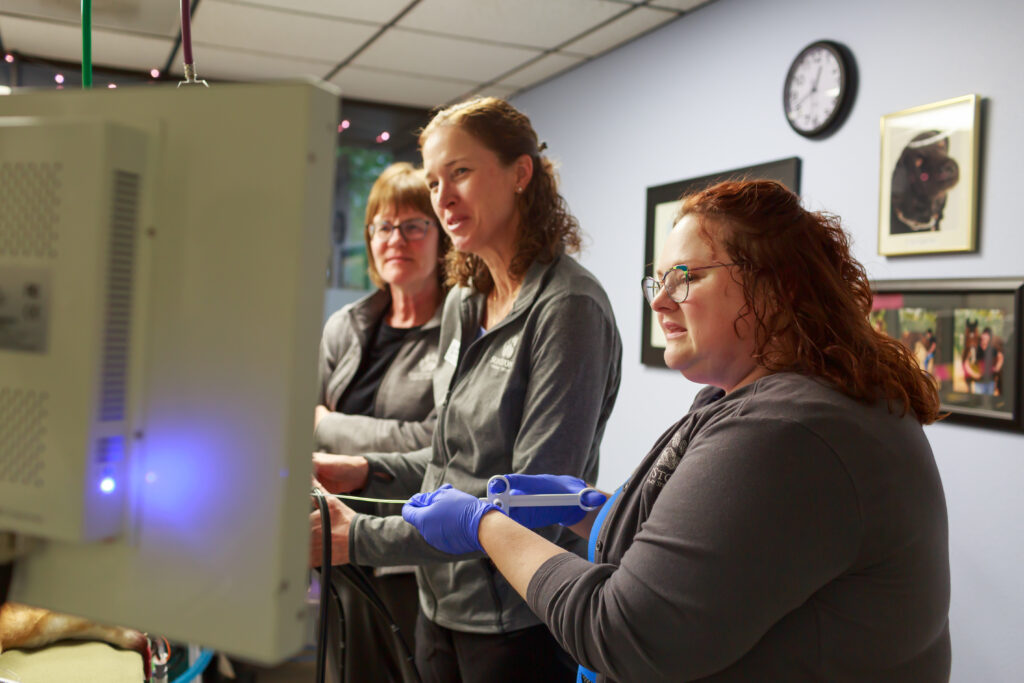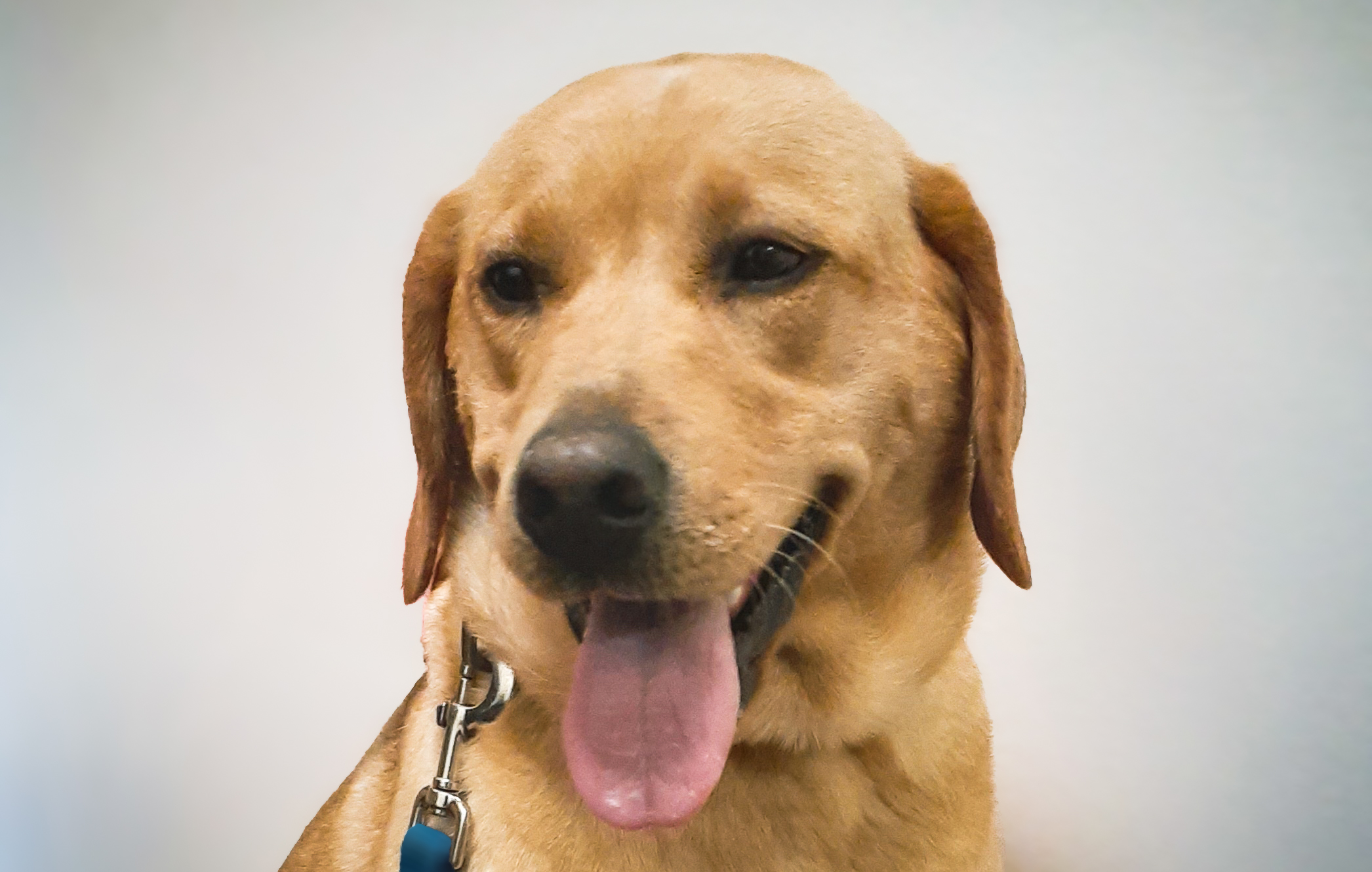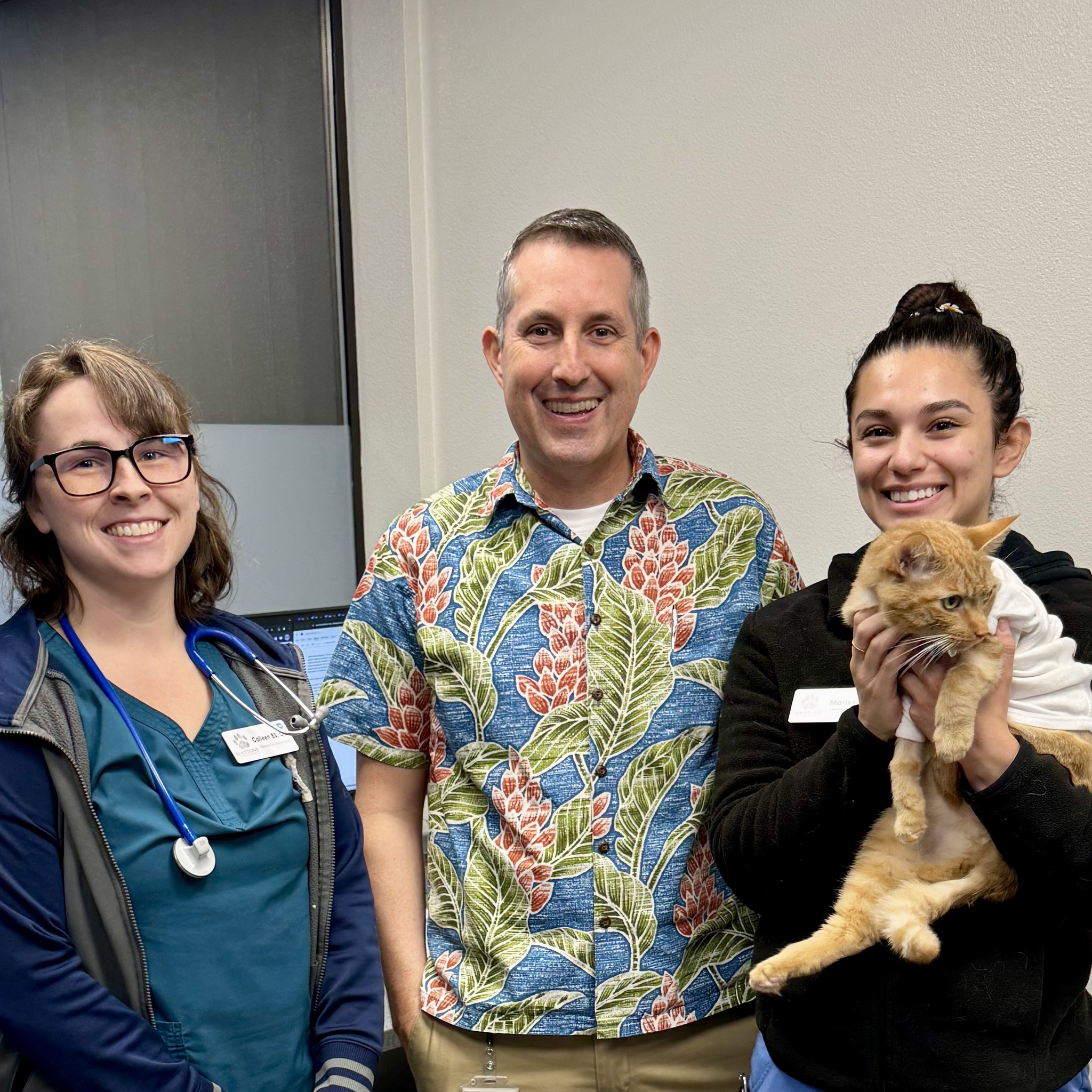In the last installment of our blog, we introduced you to one of our favorite diagnostic tools- endoscopy! We went over the basics and talked about gastrointestinal endoscopy, the most common form of endoscopy we do here at Sunstone Vets. Here’s the link to that blog in case you missed it! This week, we will learn about the other types of flexible and rigid endoscopy that we offer and how they can help your four legged family member.
Types of Flexible and Rigid Endoscopy
Bronchoscopy
In bronchoscopy, one of our Internal Medicine Specialists sends a long, thin flexible camera (a bronchoscope) down your pet’s airways. They begin in the mouth, move down the trachea, and into the lungs. The doctor watches on a video screen while guiding the camera through the respiratory tract.
Common reasons for this procedure include chronic coughing, difficulty breathing, and lung changes on x-rays.
Taking Samples for Diagnosis
Bronchoscopy allows the doctor to visualize your pet’s lungs and remove a foreign object, if necessary. It also provides a chance to take samples for testing. One procedure, bronchoalveolar lavage (BAL), involves instilling sterile saline into the lungs through the scope. The fluid is then collected and examined for infectious agents, blood cells, immune cells, or tissue cells. This helps make a definitive diagnosis and guide treatment.
Cytology and Culture Testing
Another test performed during bronchoscopy is cytology. The doctor uses a small brush to collect airway cells through the scope. A pathologist examines these cells for more information. A culture and sensitivity test may also be performed. The lab attempts to grow organisms from the sample and identifies which antibiotics are effective. This is a valuable tool that allows your doctor to provide targeted antibiotic therapy.
Other Tests for a Complete Diagnosis
Bronchoscopy may also include additional tests based on your pet’s case. These could involve viral testing, PCR tests, and more. Your doctor will determine the best tests to guide treatment.
Risks and Treatment Options
Bronchoscopy is generally a safe, quick, and minimally invasive procedure. However, pets with respiratory disease may face increased risks during anesthesia. Your doctor will discuss these risks and any precautions. Treatment options may include oral or inhaled medications, rechecking x-rays, or referral to a specialist for stent placement, lung lobe removal, or oncology.
Rhinoscopy
Rhinoscopy is a common type of endoscopy we offer. It uses a rigid scope to gently examine and sample the inside of the nasal cavity. Your Internist may recommend rhinoscopy if your pet has symptoms like chronic sneezing, nasal discharge, nasal bleeding, nasal swelling, or noisy breathing.
The Rhinoscopy Procedure
During the procedure, your pet is anesthetized. A small rigid scope is inserted into one nostril at a time. The doctor instills saline to flush away debris and improve visualization. They guide the scope and watch the video screen. The doctor may use biopsy instruments to collect tissue samples from any areas of concern.
Additional Testing for a Complete Diagnosis
Sometimes, a small flexible scope is used to examine the back of the throat (the nasopharynx), where the nasal cavity meets the mouth. The doctor may also collect samples for culture and sensitivity or other tests, similar to bronchoscopy. These tests help identify the cause of your pet’s symptoms.
Finding and Removing Foreign Objects
In some cases, we discover a foreign object, like a piece of grass, lodged in the nasal passage. If found, removing the object can be curative. However, more often, the biopsies or samples reveal infections, autoimmune disease, or even cancer. Your doctor will develop a treatment plan tailored to your pet’s specific condition.
Additional Imaging and Testing
Along with rhinoscopy, your Internist may recommend imaging like skull x-rays or a CT scan of the head. Cryptococcus blood testing may also be advised for cats with nasal symptoms. Rhinoscopy is minimally invasive and typically leads to quick recovery.
Post-Procedure Care and Risks
After rhinoscopy, your pet may experience mild nasal symptoms or bleeding for a day or two. This is normal. However, if your pet has a large nosebleed, we recommend seeing an emergency service for further care.
Cystoscopy – A Less Common Endoscopy
We’ll quickly mention the less common type of endoscopy we perform: cystoscopy. We use cystoscopy to visualize the lower urinary and genital tract. We advance a camera through the urethra into the urinary bladder, allowing us to see the ureters as they connect to or enter the bladder. The ureters are the thin tubes that connect the kidneys to the bladder. Cystoscopy also provides valuable information about the vulva, vagina, or penis, as well as the urinary tract. Cystoscopy has specific requirements regarding patient size and is not always an option.
We may recommend cystoscopy for chronic urinary tract infections, urinary incontinence, vaginal bleeding, discharge, and other conditions. It can help diagnose ectopic ureters, bladder stones, masses, polyps, strictures, and more. If you or your family veterinarian think cystoscopy could benefit your pet, give us a call.
Endoscopy Conclusion
Between this blog and the last, we hope that you now have a better understanding of how valuable the different types of endoscopy can be. From shorter recovery times, and minimal to no incisions, to the wide variety of information that can be gained, its easy to see why we are fans of endoscopy here at Sunstone Vets! As always, please contact us if we can be of help to you and your pet.
Best wishes for health and happiness.
Sincerely,
Katie BS, AAS, CVT, VTS (SAIM) and the family here at Sunstone Vets






